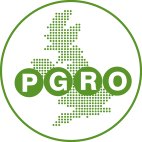As the global population grows, the world’s natural and finite resources are becoming increasingly strained. The United Nations estimate that world population is projected to reach 8.5 billion by 2030 and 9.7 billion by 2050 (United Nations, 2019). In order to provide enough food globally in line with a growing population, socio-economic changes, and measures to address the challenges of hunger, food insecurity and malnutrition; efficient and sustainable food production systems are required.
The average citizen typically consumes too much animal protein per capita in the UK and Europe, reaching levels that are unsustainable. Farmed animals play a pivotal role in the food production system, enabling the creation of food products for humans, often utilising materials that are otherwise unsuitable for direct human consumption.
The production of animal feed ingredients is competing with and utilising land that that could otherwise be used to produce other food crops for direct human consumption. Land use change for producing crops is taking land away from natural habitats and ecosystems that provide a wide range of environmental benefits. The production of soy is one example, with large quantities produced each year to provide feed for farmed animals.
Alternative proteins include:
- Plant based proteins
- Cultured meats
- Fermentation
- Insects
- Mycoprotein (Quorn)
A range of novel proteins is emerging (e.g. algal, bacterial, and yeast-derived) with the potential to displace conventional protein sources (e.g. fishmeal or soybean meal) for use in farmed animal feed. These have all sorts of innovative sources, from insect farms, to seaweed, microalgae and single-cell protein or microbial proteins (e.g. yeast, bacteria, fungi, and algae), as well as more conventional plant proteins (e.g. pea protein).
Insect protein is one alternative that has been acknowledged as having considerable potential for use in animal feed (for species such as e.g. chickens, pigs and salmon). Insect protein presents an opportunity to diversify, displace or replace some of the current protein needs of animals fulfilled by fishmeal and soybean meal. Not only can insects be farmed in relatively small spaces compared to other agricultural products, they offer the opportunity to utilise by-products that may otherwise be wasted, and farming can be conducted on nonagricultural land with fewer environmental consequences.
More than 2,000 insect species are considered edible, with most of these originating in tropical countries. The following species as those which are reported to have the ‘biggest potential’ to be used as food and feed in the EU, although it is unclear what factors contributed to making this assessment:
• Musca domestica: Common housefly
• Hermetia illucens: Black soldier fly
• Tenebrio molitor: Mealworm
• Zophobas atratus: Giant mealworm
• Alphitobus diaperinus: Lesser mealworm
• Galleria mellonella: Greater wax moth
• Achroia grisella: Lesser wax moth
• Bombyx mori: Silkworm
• Acheta domesticus: House cricket
• Gryllodes sigillatus: Banded cricket
• Locusta migratora migratorioides: African migratory locust
• Schistocerca Americana: American grasshopper
Species of particular interest for use in feed products include Hermetia illucens (black soldier fly), larvae of Musca domestica (common housefly), and T. molitor (yellow mealworm). the preferred insect species for commercial scale production of insect protein for animal feed is black solider fly (BSF). In Europe, 95% of insect production is BSF and yellow meal worm.
This is a rapidly developing area. We hope this page can help provide a hub to connect to relevant organisations, projects and resources (eg Cultivate-UK)







Discussion
'Protein' is not all the same, and is not all good! Proteins essentially contain reactive nitrogen which, after excretion (by whoever or whatever), has all sorts of undesirable consequences for our environments. We would do well to reduce protein production (whether conventional or 'alternative') and focus on what is essential in diets (of whoever or whatever), which very often is just a few essential amino acids. Essential amino acids are now available and widely used in livestock feeds, produced through highly sustainable fermentation systems (their main feedstocks are molasses and ammonia). Let's not get too excited about eating insects (or indeed soybeans) until we're sure their production and their protein are essential.